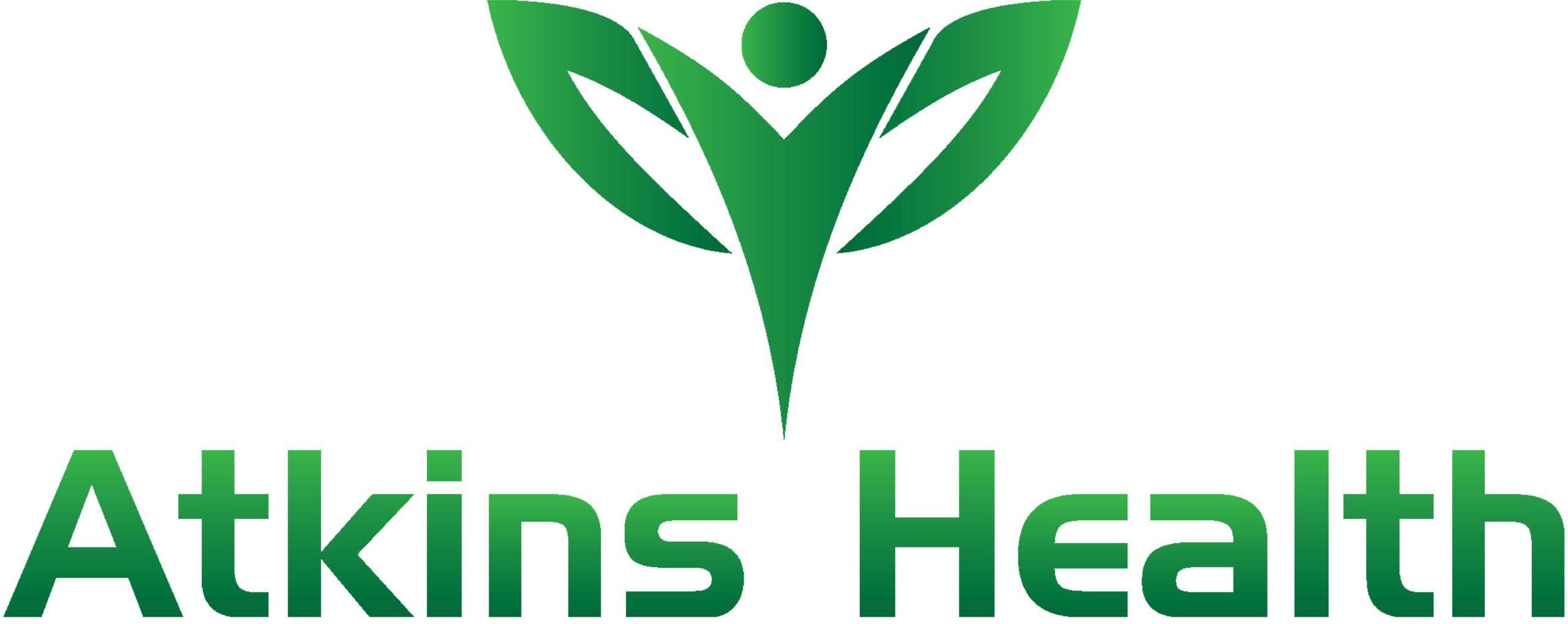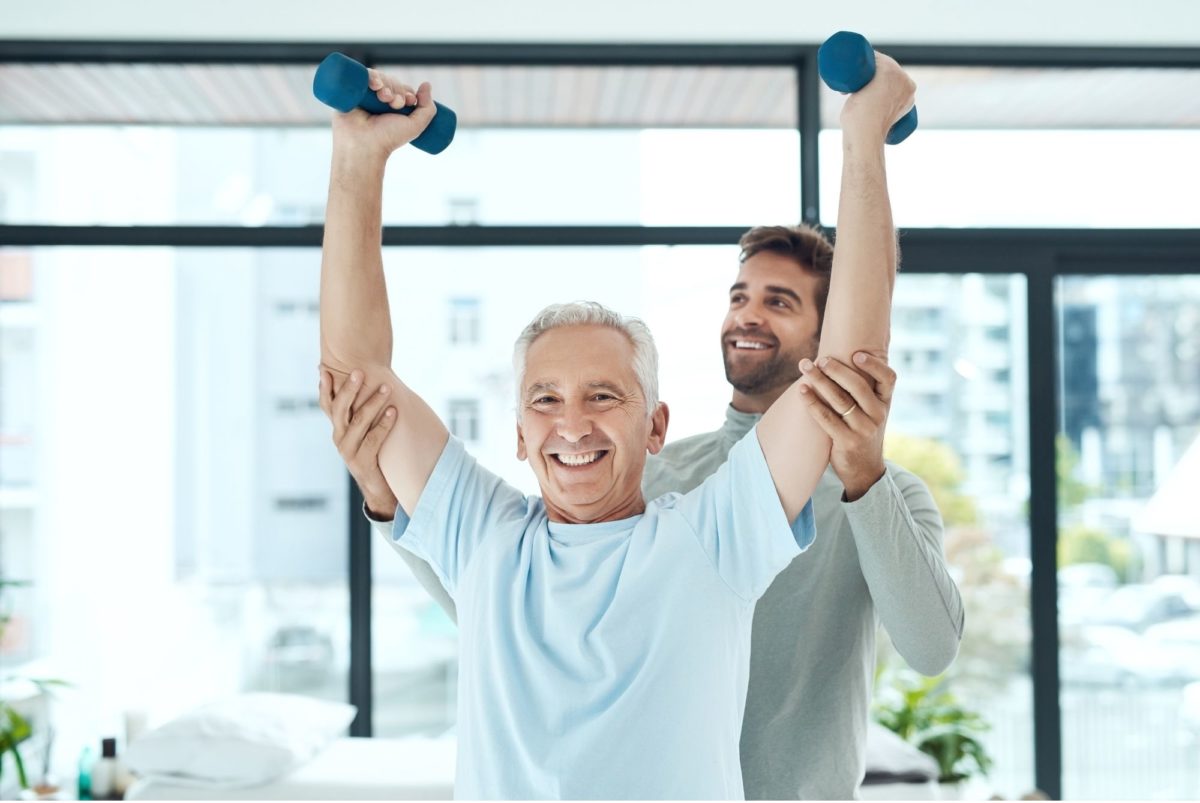Our Varsity Lakes clinic is home to one of our most extensive service offerings. Located just 500m from Bond University, our clinic offers exercise physiology services, personal training, home visit programs and an extensive range of specialised group classes. From our handy location within Temple Gym, we conduct a range of 1-on-1 and group sessions all tailored to the varying needs of our growing client base.
From 8 through to 108 – we work with clients of all ages to achieve exercise and well-being goals of all degrees. Find out more about our full suite of services to find your perfect fit below.
Our Location and Facilities
Our clinic is located within Varsity Lakes’ Temple Gym, providing us with direct access to state-of-the-art exercise facilities. Temple Gym is quieter than most commercial gyms, offering clients ultimate privacy and comfort during their sessions. It is also fully air conditioned, which is beneficial for our clients with multiple sclerosis that may struggle to regulate their temperature.
Services We Offer
Each of our services is designed to integrate as an end-to-end exercise support offering. Whether you’re an up-and-coming sports star, recovering from an injury, or seeking NDIS funded programs – Atkins Health Varsity Lakes can help.
We often see clients through various stages of their health journey. Our diverse team of professionals allows for efficient and personalised cross-referrals. A client who comes to us for injury rehabilitation with our exercise physiologists may choose to transition into our personal training pathway at the conclusion of the rehab.
Personal Training (PT)
Atkins Health has recently welcomed the addition of a qualified personal trainer into our Varsity Lakes team.
Our personal training and exercise physiology teams will work hand in hand to devise a program that is effective, personalised and expertly backed by both disciplines.
Our personal training is great for people of all fitness levels. Below are a few of the main reasons our clients have sought personal training:
- Accountability: Simply having someone that expects you to show up is a strong motivator
- Personalised programming: Receive a fitness program tailored to your specific goals, needs, and abilities. It can also be adjusted based on your progress and feedback.
- Proper form and technique: Having an expert overseeing your technique can promote efficiency while reducing the risk of injury
- Variety and challenge: Spice things up with an evolving routine and learn new exercises from an expert who is across the latest and greatest exercises
- Goal setting and tracking: Stay focused and motivated with a structured goal map and celebrate your successes along the way.
- Education and guidance: Receive complementary education on proper nutrition and lifestyle habits to support your fitness goals.
Home Care
We specialise in providing home care services for clients with neurological or accessibility issues, as well as those on Lifetime Care Packages or funded by the National Disability Insurance Scheme (NDIS). We can attend homes anywhere in the Gold Coast region – from Tweed Heads to Beenleigh and as far inland as Beaudesert.
Our home care services focus on the basics of exercise and physical activity, such as bodyweight exercises, or band exercises. We work with you to improve your ability to perform the activities of daily living, so that you can enjoy a better quality of life. Our team of exercise physiologists will create a personalised program that meets your specific needs and goals.
One of the advantages of our home care services is accessibility. We understand that some clients may find it difficult to access transport or transfer into a gym, which can be a major obstacle to achieving their health and fitness goals. By bringing our services to your home, we take that problem out of the equation and make it easier for you to get the care you need.
This can also be a great option for respite care for loved ones who are often the primary caretakers for our clients. Our home visits provide caregivers with an opportunity to take a break from their responsibilities, while their loved one participates in an activity that offers cognitive, physical, and social advantages. Our home care visits can also provide a helpful reprieve from loneliness and isolation that patients can often struggle with.
In addition, we also offer a combination of clinic and home care sessions. This is particularly useful for clients who may not want to come to the clinic too often, but still want the benefits of working with our exercise physiologists.
Classes & Programs
Our classes adopt a holistic approach to managing neurological conditions. Our certified trainers incorporate exercise, social interaction and cognitive stimulation into our classes to provide clients with the tools needed to manage their condition effectively.
We prioritise community and strive to create a welcoming environment for everyone. It’s a unique opportunity for patients to take control of their health and wellbeing while connecting with others that can understand and empathise with their experiences.
Our classes are individually tailored to suit each client’s own abilities and to specifically target certain health conditions.
Our Varsity Lakes group program includes the following classes:
- Squad Atkins – a broad class offering that seeks to improve general fitness, strength and mobility, and can be specifically tailored to target any injuries or ailments
- Bone Society – specifically designed to improve bone density and strength, which in turn reduces the risk of falls. Targeting Osteoporosis and Osteopenia.
- Mission MS – specifically designed to enrich the lives of those impacted by Multiple Sclerosis (MS). Mission MS combines the benefits of balance, coordination, strength and endurance-based exercises to improve each participant’s ability to execute daily functions.
- PD Revolution – designed for participants suffering from varying degrees of Parkinson Disease. The program aims to improve gait, reduce freezing episodes, improve balance, improve fine motor skills, delay the need to increase drug treatment and ultimately regain confidence and independence.
- Athletic program – specialised for young athletes looking to improve performance and establish effective long-term training habits and techniques. Is tailored to specific sports and events.
- Active Alzheimer’s – Our program focuses on a proactive approach in delaying the need to go into assisted care. The program uses a blend of physical and cognitive activities that vary from week to week.
1-on-1 Exercise Physiology Sessions
Our 1-on-1 exercise physiology (EP) services provide personalised and evidence-based exercise programs tailored to your individual needs, goals, and abilities. Whether you’re looking to improve your fitness, manage a chronic condition, enhance sports performance or recover from an injury, working with an exercise physiologist can help you achieve your goals.
During your initial consultation at our Varsity Lakes clinic, one of our exercise physiologists will conduct a comprehensive assessment of your health history, fitness level, and any specific needs or concerns you may have. Based on this assessment, we’ll devise a customised exercise plan which we will work with you on in the Temple Gym facilities.
Your exercise program may include a combination of cardiovascular, strength, and flexibility exercises, as well as other specialised exercises or mobility routines.
Working with a 1-on-1 exercise physiologist can help you improve your overall health and fitness, reduce your risk of chronic disease, and improve your quality of life.
Who We can Help
We are fortunate to work with clients young and old at our Varsity Lakes clinic. We regularly work with clients for the following reasons:
- Musculoskeletal disease or dysfunction (including tendinitis, muscle strain, muscle weakness, deterioration)
- Bone Health (including osteoporosis, osteoarthritis, surgical pre/rehabilitation)
- Cancer
- Women’s health issues (including osteoporosis/osteopenia, pelvic floor, endometriosis)
- Neurological disorders (such as Parkinson’s disease and multiple sclerosis)
- Mental health conditions (including depression)
- Pain relief
- Cardiovascular disease
- Pulmonary disease (including asthma, COPD)
- Learning difficulties
- Cognitive disorders
- Weight control
- Diabetes
- Metabolic disorder
If you’re interested in joining our Varsity Lakes community, pop on by or give us a call to find out more.












